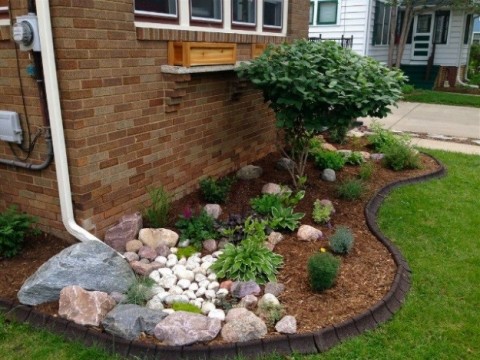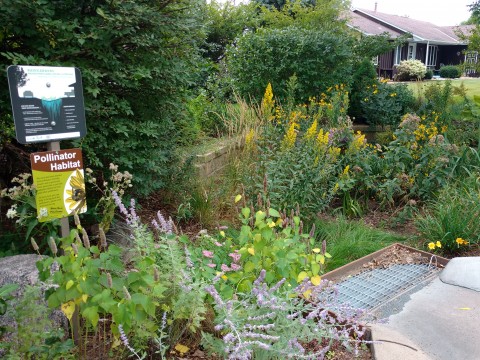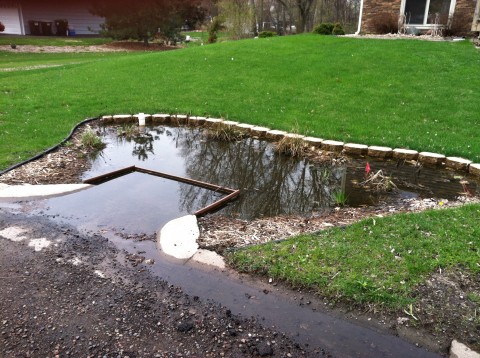Rain gardens have popped up like weeds throughout the Twin Cities over the last decade to mitigate stormwater pollution in lakes, rivers, and streams. Despite their prevalence, the function and purpose of these little curbside gardens remain a mystery for many folks.
Rain Garden Benefits:
Cities are very dirty. When it rains, stormwater picks up everything from feces to the motor oil that your neighbors spilled on their driveway. Many older neighborhoods were developed without stormwater treatment, so pollutant-laden runoff from roads, houses, driveways, and parking lots makes its way directly into rivers, lakes, and streams. Stormwater doesn't end up in a wastewater treatment facility or septic system like the water that drains out of your bathtub.
When functioning correctly, rain gardens protect natural water bodies from polluted stormwater, reduce flooding, recharge groundwater, and provide habitat for local pollinators. Rain gardens can be built to any size or shape to fit into the landscape of old neighborhoods where space is limited. They are relatively inexpensive to design and construct and can be maintained by homeowners who agree to take on that responsibility.
To treat all of the water in a neighborhood, it may be necessary to pepper the neighborhood with many small rain gardens, or put in a few larger gardens depending on available space and landowner interest. A well-functioning rain garden will dry out within 48 hours after a rain event, which keeps the plants healthy and prevents creation of mosquito habitat.
Rain Garden Types:
There are two basic types of rain gardens, those built to treat water exiting a gutter downspout, and those built to treat road runoff. The first type, called a downspout rain garden, can easily be installed by a homeowner. This type of rain garden can prevent flooding around downspouts and allow rainwater to recharge groundwater.
The second type is called a curb-cut rain garden because an opening is cut into a roadside curb to allow water to flow off the road into the rain garden. When the rain garden has filled to the brim, the stormwater flowing along the curb will pass by and flow into the storm drain as it did prior to installing the rain garden. Curb-cut rain gardens are much larger, more complex, and should be designed and installed by professionals. Curb-cut rain gardens are more cost-effective because they only treat water that would definitely have made it into the stormwater system. For this reason, they are the only type of rain garden for which Anoka Conservation District currently provides assistance.
While traditional curb-cut rain gardens are built with the expectation that water will drain through the soil, some rain gardens are built in conditions that don't allow for water to drain quickly enough. In this scenario, an underdrain would be installed below the rain garden. The underdrain re-directs excess water from the rain garden into the street's stormwater drain to prevent the rain garden from flooding.Rain Garden Pitfalls:
Unfortunately, some rain gardens don't work as intended. Due to poor planning, faulty design, shoddy construction, or a lack of maintenance, some rain gardens fail to properly fill or drain. When done right, rain gardens are an effective and aesthetically pleasing method for combating pollution in lakes and streams, replenishing groundwater, and creating pollinator habitat. However, not every property or every homeowner is ideally suited to have a rain garden. While professionals at ACD can assess whether or not a property is a viable candidate, only the homeowner can decide if they are up to the task of maintaining a rain garden.

